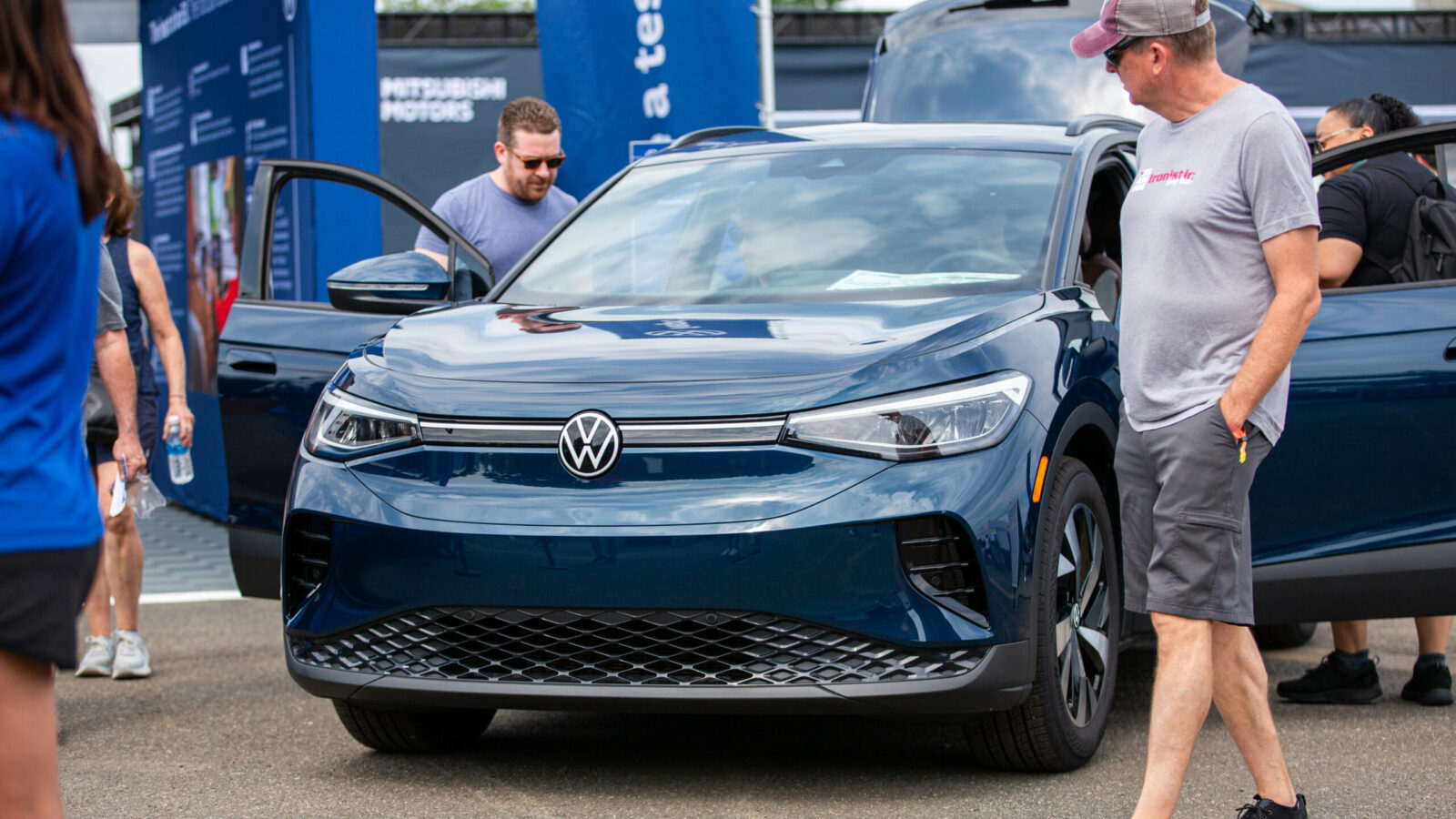- EVs are declared a total loss at a lower rate than ICE vehicles and luxury ICE vehicles.
- Compared to repairing a gas-powered vehicle, repairing an EV at a body shop requires six more hours of work on average.
- Should repair costs affect your choice to buy an EV? No.
- EV technology is still developing and related industries (repair shops, towing companies, and parts suppliers) have to evolve to meet EV needs.
EV naysayers continue to spread negativity about innovative electric vehicle technology. The latest “bah-humbug” rumor has to do with insurance claims and totaling damaged vehicles.
According to the skeptics, EVs are more likely to be declared a total loss compared to vehicles with internal combustion engines. An independent research company found that this rumor is not true.
Why Insurance Companies Declare a Vehicle Totaled
The rules for totaling a vehicle vary from state to state. In Michigan, for example, a vehicle is totaled when the cost to repair is at least 75% of the cost to replace the vehicle.
After you’ve been in an accident, an insurance adjuster will inspect your vehicle and determine its value. This process could take a few days or a few weeks. The adjuster will look at your vehicle’s:
- Make, model, and year
- Mileage
- Comparison vehicles
- Value of selling parts
- Pre-loss condition
ADVERTISEMENT
Independent Agency Conducting Insurance Research
Mitchell, a company owned by Enlyte, released a new report about electric vehicles and collision rates. The company found that in the US and Canada, gas-powered vehicles were declared total losses at a higher rate than electric vehicles.
Rumors abound that insurance companies are considering EVs a total loss even if they have minor damage. This couldn’t be farther from the truth.
Ryan Mandell, the director of claims performance at Mitchell, said, “Our data simply does not support that conclusion. Even though an EV’s lithium-ion battery significantly increases the likelihood of a total loss outcome, we do not see these automobiles declared total losses more often than ICE alternatives.”
Comparing Three Quarters of EV vs. ICE Insurance Data
Mitchell compared insurance data during the first three quarters In the US and Canada. They found that insurance companies declared that 7.25% of damaged EVs were a total loss, while they declared 8.49% of ICE vehicles total losses. Luxury vehicles with internal combustion engines were totaled at a rate of 7.47%.
ADVERTISEMENT
Costs to Repair EVs and ICE Vehicles
On the flip side, EVs have higher repair costs compared to ICE vehicles, which is part of the equation when determining if a vehicle is a total loss. Repair shops needed an average of six more hours to repair an EV compared to an ICE vehicle. Labor expenses for EVs were 49.66% of the total repair cost, while ICE vehicles had 41% of the repair costs go to labor. Those extra hours were often due to de-energizing or removing the EV battery.
During the first three quarters of 2023, insurance companies reported that 88.85% of EV parts had to come from the original equipment manufacturer (OEM). ICE vehicles were less expensive to repair because only 67.48% of the parts were from the OEM. Genuine OEM parts always cost more than third-party or generic parts.

The majority of EV accidents in the United States happen in California, as the state has 4.81% of all EV claims. The EVs with the most insurance claims were the Tesla Model 3 and Model Y – as the two combined for 63% of all EV insurance claims.
The Trouble With Comparing EVs and ICE Vehicles
While it might seem normal to compare electric vehicles and vehicles with internal combustion engines, they have so many differences that can make the comparisons ineffective. In the United States alone, there are about 285 million vehicles on the road, and fewer than three million of those are electric.
Because ICE vehicles have been driven by the majority for decades, there are more parts available – both OEM and third-party. Third-party manufacturers are slowly adding EV parts to their catalogs, but not at a fast enough rate to compete with the availability of parts for gas-powered vehicles.
Damaged EVs and Towing Recommendations
The dangers of moving and storing damaged EVs have recently appeared in news stories around the US. These are additional expenses for insurance companies and could affect the cost of repairing EVs.
The National Transportation Safety Board reported that potential lithium-ion battery fires and electric shocks create a safety issue for first responders, tow truck drivers, and repair shop employees. The NTSB report makes safety recommendations for tow truck companies and for salvage yards that hold EVs.

The drive to the yard can be potentially dangerous, especially if the EV has damage to the battery. To protect drivers and equipment, tow truck companies are outfitting their trucks with fire-proof car-sized blankets.
Towing companies are also using a device called a TowTrack which keeps the EV close to the ground for more fire-safety precautions. These new safety tools could add to the cost of insuring EVs, as they will add to the cost of towing an EV.
Once the damaged EV arrives at the salvage yard, the NTSB recommends it be inspected for battery leaks and electrical damage. After the inspection, the damaged EV should be stored at least 50 feet from other combustible objects, or yard managers should keep EVs behind a barrier of fire-proof material like earth, concrete, steel, or masonry.
ADVERTISEMENT
Should These Issues Stop People From Purchasing EVs?
The quick answer is no.
Electric vehicle technology is still new, and it is evolving. Many of the issues that plague EVs are common across the automotive industry. Rather than complaining about the changes to the automotive industry, related industries should develop technology that makes servicing damaged EVs more convenient and efficient.
The Struggle to Find Car Parts
Parts are limited for EVs, but they are also limited for other vehicles. Ask anyone who has needed car repairs, and you’re bound to hear stories about waiting for unavailable parts.
For example, we had to wait three months for a steering damper for our 2021 Jeep Wrangler 4xe. A year ago, my daughter had a minor accident with her 2021 Honda Civic. The body shop had to wait about a month for a new OEM rear bumper. Last year, my colleague hit a deer with his 2016 Dodge Caravan. He had to wait five months for the parts to arrive.
Standardizing Towing and Storing EVs
Soon, towing and storing EVs will become standardized. For decades, damaged vehicles have been managed in one way, and the industry has to adjust to a new type of vehicle. Innovative companies will create specialized towing equipment and salvage yards will designate dedicated areas for EVs.
Gas-powered cars also catch fire, and towing professionals have learned to manage them safely. They will do the same with EVs, as it’s good business practice to adjust services to fit changing customer needs.
Catching Up with the Technology
Remember when automakers first began putting computers in all cars? Everyone worried about who would repair them. Now, all repair shops are staffed by technicians who know how to take care of high-tech ICE vehicles. The same will happen with EVs as more technicians are trained to repair and maintain them.
Worrying about totaling your vehicle shouldn’t determine whether or not you buy an electric or gas-powered model. Otherwise, why buy any type of automobile? If you need a vehicle, buy the one that fits your driving needs and budget.
Owning an EV comes with several benefits – especially the zero emissions and lower maintenance costs, but they force you to make some changes to your driving habits as charging stations aren’t as prolific as gas stations.
ADVERTISEMENT

FEATURE IMAGE: MUHAMMAD DAUDY
FTC: We use income-earning auto affiliate links. Learn more.












One Response
That 50 feet of clearance required to store an EV waiting for repairs is going to make many auto repair shops to say, no thanks.